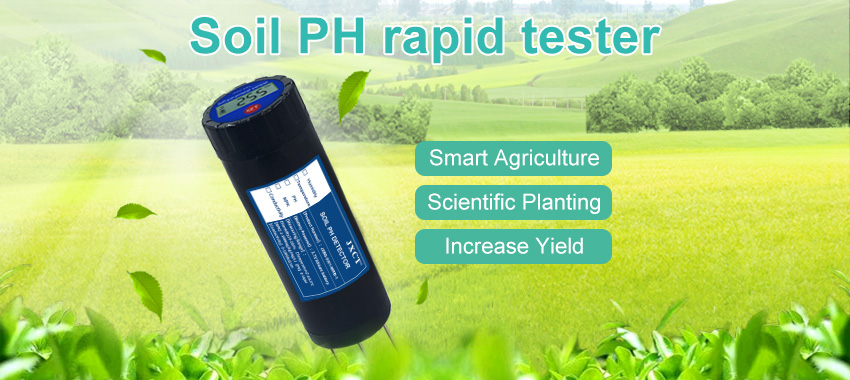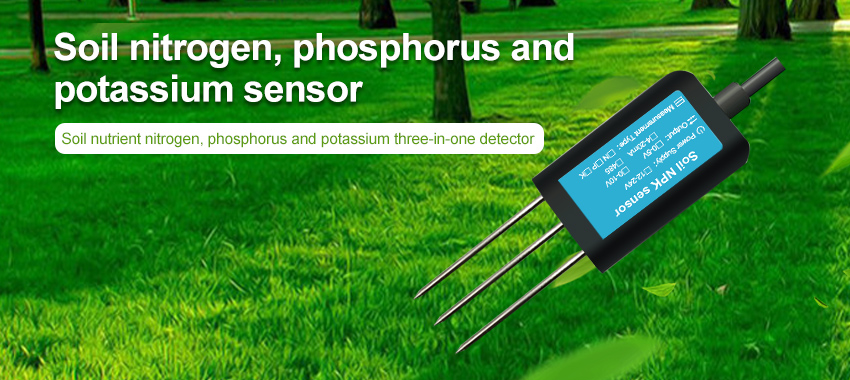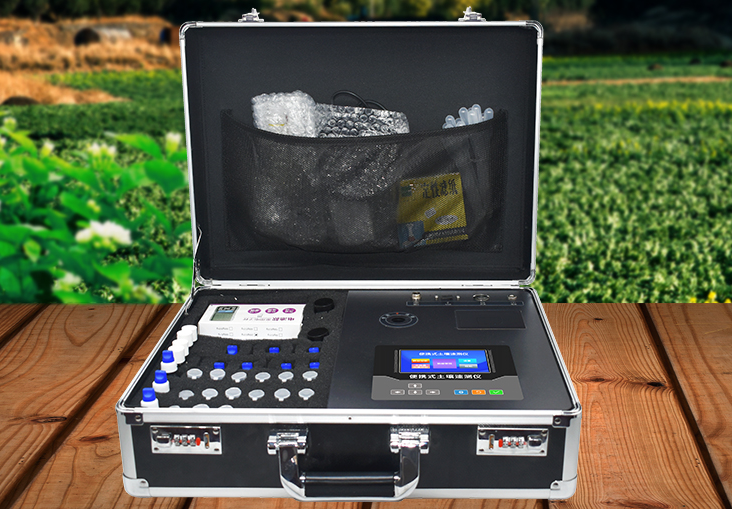Summary:
With the continuous progress of society and the rapid development of science and technology, scientific soil testing and scientific fertilization have become a way advocated by large-scale agricultural planting. For soil detection, it is not only able to detect soil nutrients. There are many elemental indexes, and different soil sensors can be used to detect the indexes of soil. Thus provide scientific data support for agricultural planting production. What are the specific parameters that need to be monitored? What does it do?
Soil is the main material basis for plants to survive, and can provide crops with the necessary water, fertilizer, heat and air for growth. This is mainly because soil consists of organic matter, minerals, soil air and soil moisture, microorganisms and so on. Minerals are the most basic substances that provide plants with a variety of nutrients. Organic matter can not only provide nutrients for plants, but also play an important role in improving soil aggregate structure, physical and chemical properties, water supply, water retention, temperature stability and ventilation.

Monitoring of soil moisture:
Less soil moisture can directly (decrease of photosynthetic materials) or indirectly (stomatal closure, enzyme inactivation, etc.) affect the decline of photosynthesis. That’s going to be a big limiting factor for photosynthesis. Lack of water can also kill crops. Because the total volume of soil interstitial space is fixed, and this volume is occupied by water and air. So when the water is too little, the plant root absorption of water is insufficient, and the plant transpiration and loss of a lot of water, resulting in plant dislocated .
When the soil is very dry, the tension that causes the soil to harden and crack can pull the roots apart. In severe cases, the plant will die. When there is too much water, the proportion of air is small, resulting in reduced aerobic respiration of the roots. The roots of plants are forced to switch to anaerobic respiration, which produces alcohol that poisons the roots, leading to root rot and, in severe cases, plant death.
To monitor soil moisture, soil moisture sensor can be used to timely decide whether to irrigate or stop irrigation through data, so as to ensure that soil moisture is suitable for crop growth.
Monitoring of soil temperature:
Suitable soil temperature is good for plant growth, too low or too high is not good for plant growth. The seeds of a crop must germinate within the proper temperature range of the soil, within a certain temperature range. The higher the soil temperature, the faster the growth and development of crops. Different plants have different temperature requirements. By monitoring the soil temperature, the soil temperature is kept in the suitable range of crop growth temperature to ensure the increase of crop yield and income.

Soil PH monitoring:
The growth of all kinds of plants have their own suitable soil acidity and alkalinity, most plants in the PH is too high or too low are difficult to grow normally. Some diseases can only occur within a certain PH range, such as cataplexy, which tends to occur easily in alkaline and neutral soils. Suitable acidity and alkalinity of soil are beneficial to the growth of agricultural products and the reduction of pests and diseases. So soil PH monitoring is very necessary.We can use soil pH sensors for online monitoring.
Monitoring of soil nitrogen, phosphorus and potassium:
Nitrogen is the main component of protein, which plays an important role in stem and leaf growth and fruit development, and is the nutrient element most closely related to yield. Before the rapid expansion of the first panicle, the uptake of nitrogen increased gradually.
Phosphorus fertilizer can promote tomato flower bud differentiation, early flowering and fruit, promote seedling root growth and improve fruit quality. When phosphorus is lacking, the buds and roots grow slowly, and the plant is stunted, with dark green, dull leaves and purple underside.
Potassium can improve stem strength, fruit quality, cold resistance, and sugar and vitamin C content in fruits. Like nitrogen and phosphorus, potassium deficiency symptoms first appear in old leaves. When potassium supply is insufficient, carbohydrate metabolism is disrupted, photosynthesis is inhibited, and respiration is enhanced. Therefore, when the plant is deficient in potassium, its ability to resist stress is weakened, and it is vulnerable to diseases.

5 in 1 integrated soil sensor:
5 in 1 soil sensor is a kind of soil integrated sensor independently developed by the company. Soil temperature, soil moisture, soil pH value, soil conductivity (EC), soil nitrogen (N), soil phosphorus (P), soil potassium (K) can be monitored simultaneously. Soil integrated sensor (5 in 1 soil sensor) adopts international new generation TDR measurement method. The detection accuracy can reach less than 3%. The special metal probe greatly prolongs the service life of the product. IP68 protection, waterproof, dustproof.

Soil Nutrient Tester:
Soil nutrients refer to the essential nutrients provided by soil for crop growth, including 13 elements such as nitrogen (N), phosphorus (P) and potassium (K). In order to meet the requirements of separation from the laboratory, it can be used independently with low cost. The determination of soil nutrients can be done quickly and quickly. After years of research and development, the soil fertilizer nutrient fast tester was successfully born. Adopt spectrophotometric detection technology, detection precision is high, speed is fast. It is an ideal soil testing instrument.